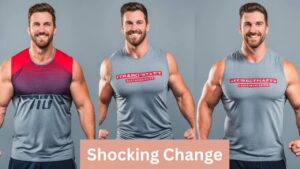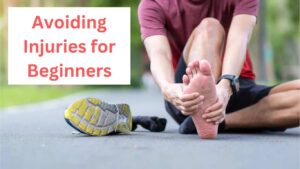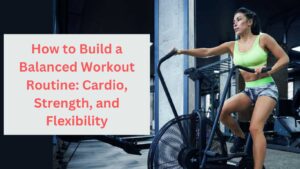Starting your fitness journey can be exciting but also overwhelming. With the right mindset, clear goals, and a simple plan, you’ll be on your way to success. In this guide, we’ll cover everything you need to know, from goal-setting to workout routines and diet plans.
Step 1: Set Clear and Realistic Goals
Before you dive into any workouts, it’s essential to define why you want to start. Your goals will help you stay motivated and focused.

- Specific: Instead of vague goals like “Get in shape,” aim for something specific like “Lose 10 pounds” or “Build strength.”
- Measurable: Track your progress with numbers (weight, reps, time) so you know how far you’ve come.
- Achievable: Set goals that are realistic for your starting point. It’s okay to start small.
- Time-bound: Create a timeline. For example, “I will lose 5 pounds in the next month.”
Step 2: Create a Workout Plan
You don’t need a gym to start working out. You can create an effective routine at home with minimal equipment (or no equipment at all). The key is consistency and gradual progression.
Workout Schedule (3-4 days per week)
Day 1: Full-Body Strength Workout (Bodyweight)
- Warm-up (5 minutes): Jumping jacks, arm circles, and high knees.
- Workout:
- Squats: 3 sets of 12-15 reps
- Push-ups: 3 sets of 8-12 reps (modify on knees if needed)
- Glute bridges: 3 sets of 12-15 reps
- Plank: Hold for 30 seconds to 1 minute
- Superman: 3 sets of 10-15 reps
- Cool-down: Stretch for 5 minutes (focus on hamstrings, quads, chest, and shoulders).
Day 2: Cardio & Core Workout
- Warm-up (5 minutes): Jogging in place or brisk walking.
- Workout:
- Jumping jacks: 3 sets of 30 seconds
- Mountain climbers: 3 sets of 30 seconds
- Bicycle crunches: 3 sets of 15-20 reps
- Leg raises: 3 sets of 12-15 reps
- Russian twists: 3 sets of 20 reps (10 each side)
- Cool-down: Stretch for 5 minutes.
Day 3: Active Rest & Flexibility
- Go for a 30-minute walk, light jog, or do a yoga session. Focus on stretching and relaxing your muscles.
Rest and Recovery
Rest days are important! You don’t have to work out every day. In fact, your muscles grow and recover during rest. Aim for at least 1-2 days of rest per week.
Step 3: Follow a Beginner-Friendly Diet Plan
Fitness is about more than just working out—it’s also about what you eat. Fueling your body correctly will help you achieve your fitness goals faster.
General Tips:
- Hydration: Drink plenty of water throughout the day (at least 8 glasses).
- Portion control: Focus on smaller, balanced meals.
- Whole foods: Eat mostly whole, unprocessed foods like vegetables, fruits, lean meats, and whole grains.
- Protein: Protein is essential for muscle recovery and building. Include it in every meal.
Sample Beginner Diet Plan (Per Day)
Breakfast:
- Scrambled eggs with spinach (2 eggs + handful of spinach)
- Whole grain toast
- 1/2 avocado
- 1 cup of green tea or coffee (without added sugar)
Snack (Mid-Morning):
- Greek yogurt (unsweetened) with a handful of mixed berries
- A small handful of almonds or walnuts
Lunch:
- Grilled chicken breast (or tofu for plant-based)
- Quinoa or brown rice
- Mixed salad (spinach, kale, cucumber, olive oil, lemon)
Snack (Mid-Afternoon):
- Apple or banana
- A piece of string cheese or a boiled egg
Dinner:
- Baked salmon or grilled chicken
- Roasted sweet potatoes
- Steamed broccoli or green beans
Optional Evening Snack:
- Carrot sticks with hummus or a protein smoothie (blend protein powder, banana, and almond milk).
Diet Tips for Beginners:
- Meal prep: Plan your meals for the week to avoid unhealthy eating.
- Avoid processed foods: Minimize sugary snacks, fast food, and packaged meals.
- Mindful eating: Focus on your meals, eat slowly, and stop when you’re full.
Step 4: Track Your Progress
Tracking your progress helps you stay motivated. Keep a fitness journal or use an app to log your workouts and meals. It’s a great way to see how far you’ve come and where you need to improve.
- Workout tracking: Write down the number of sets and reps you do for each exercise.
- Diet tracking: Use an app to track your food intake and make sure you’re meeting your nutritional goals.
- Measurements: Take body measurements (waist, hips, arms) once a month to track physical changes.
Step 5: Stay Consistent and Adjust
The most important part of any fitness journey is consistency. It’s easy to get discouraged early on, but remember that results take time. Don’t worry if progress is slow—small, sustainable changes lead to long-term success.
- Celebrate small wins: Each time you reach a mini-goal (e.g., adding an extra set to your workout or losing a pound), celebrate it.
- Adjust your routine: If you feel your workouts are getting too easy, increase the intensity by adding more sets or weight (if available).
- Listen to your body: If you’re feeling overly tired or sore, take extra rest days. Rest is just as important as working out.
Conclusion
Starting your fitness journey doesn’t have to be complicated. By setting realistic goals, creating a simple workout plan, and following a balanced diet, you can make steady progress. Stay consistent, be patient with yourself, and most importantly, enjoy the process!
This beginner’s guide provides a structured plan, making it easy to follow and adapt as you progress. Feel free to make adjustments based on your preferences, and always remember: fitness is a journey, not a race.




